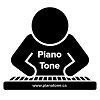So if you’re playing a digital piano or a keyboard in today’s day and age, there’s a pretty good chance that you will occasionally (or constantly like me) want to be able to play along with or at least hear audio coming from your tablet, pc or phone and still be able to hear your piano at the same time all together in your headphones. Things like playing along with YouTube or songs from your music library, playing along with an online lesson video, or a piano training app like flowkey or Skoove. There are various ways to help you hear your Piano & iPad through headphones, so let’s get into it.
I have included links below to Amazon so that you can check current pricing on items I am recommending – please note that as an Amazon Associate I earn from qualifying purchases
Step 1) Check For An Audio In
Before I even start talking about solutions for this issue there is a REALLY easy one – many digital pianos and keyboards will have some type of “audio in” functionality (the ability to receive and play audio from another source using your piano’s speakers & headphones).
If you have one, it will most likely be in the form of a 1/8″ port on your keyboard labelled with “Audio In”, “Aux In” or “Auxiliary In”. So if you have a port like this, you are in luck – all you need to do is pick up a cable to send audio from the headphone port on your device to your piano. Now make sure you confirm what kind of headphone port your device has, and what type of audio in port your piano has before you buy a cable.
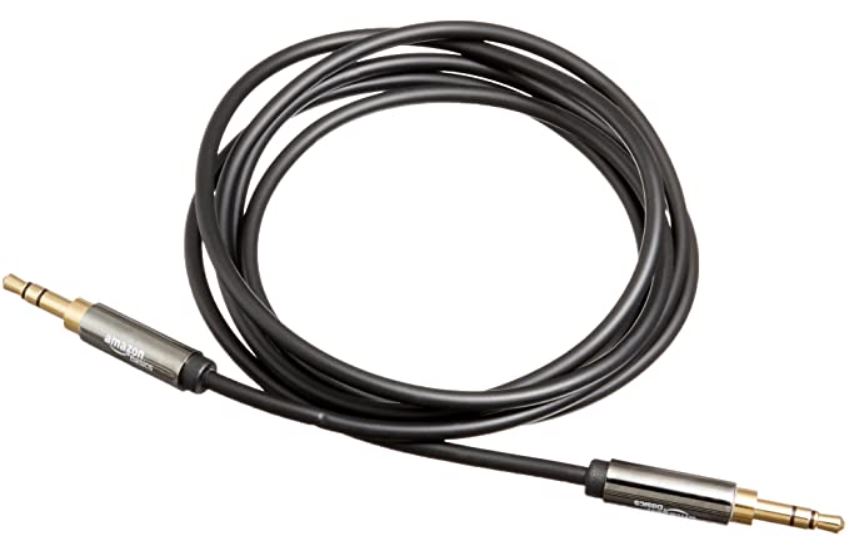
A very common example of this will be a 1/8″ (standard mini jack for headphones) on your device, and either the exact same port on your piano, or possibly a larger 1/4″ input on your piano. So for that you will need a cable like this – now you need to make sure it is stereo at both ends. You can tell if it is stereo if the connector has TWO black stripes (two is stereo, one is mono). Here is a link to an example of a 1/8″ to 1/8″ stereo cable if you want to check out current pricing on Amazon.
So if you do have an audio input, once you have the right cable, you’re all set – just connect your device’s headphone port to your audio input on your piano, and plug your headphones into your piano! (Make sure you turn down the volume on your device BEFORE you connect and turn it up slowly once you have your headphones on).
Now if you have a new piano, you might even have audio in over Bluetooth, in which case you don’t need a cable. You just need to pair your device with your piano (consult your piano’s user manual on how to do that) and you’re ready to go without having to buy anything; just pair and then connect your headphones to your piano (once again, be careful of the volume on your device).
No Audio In? Then You Need A “Mixing Device” (No, not a blender . . .)
If you don’t have any type of audio input on your piano, don’t worry there are still some easy solutions out there! In this case you need to buy a mixing device that can take more than one incoming audio signal and mix them together into a single outgoing audio signal (that you could listen to in headphones, or even through some external speakers or amplification). There are TONS of options here, but I will assume that you are most likely looking for a simple solution and that’s why you’re here, so I won’t get into too much detail about the more “involved” options (if you want a more in-depth outline on mixers and audio interfaces, you can check out my post: Introduction To Mixers & Audio Interfaces).
With any of these options, you will need to know what ports and sizes you have on your piano:
Does your piano have “Audio OUT” ports?
- If yes, then you probably have 2, marked L/R; they will be mono, and they are probably 1/4″ – if so, you will need TWO cables like this (you can tell they are mono because they have ONE black stripe):
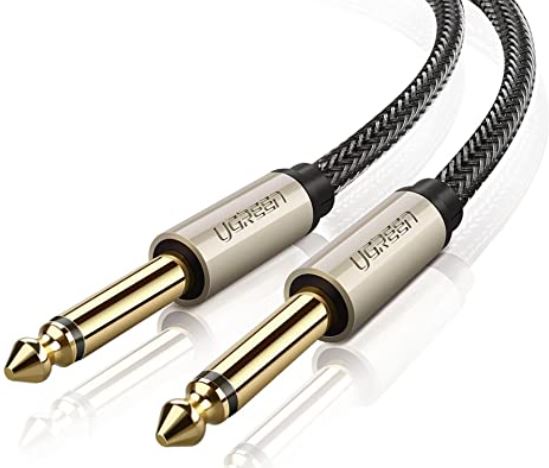
These cables will go from your Audio Out ports into ports on whatever device you choose. - If no, then you will need to use your headphone port with a splitter cable. So if your piano headphone port is 1/8″ you will need a cable that looks like this (if your headphone port is 1/4″, you could still use this cable only with the 1/4″ adapter):
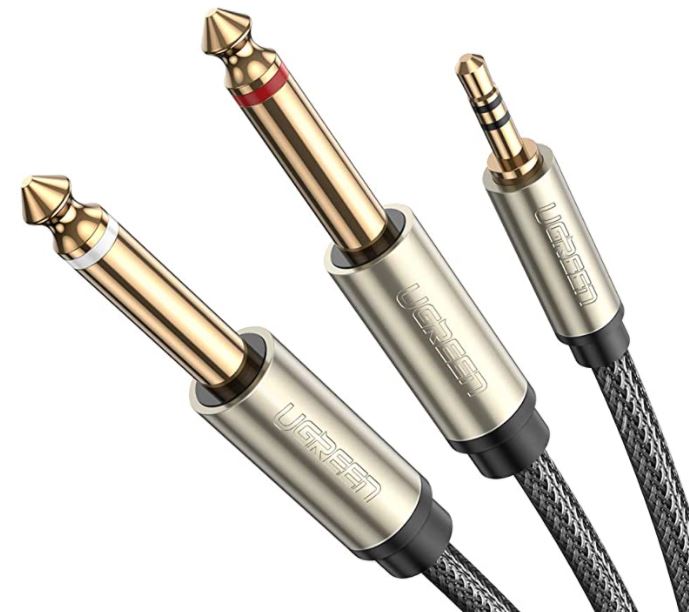
The stereo 1/8″ connector will plug into your headphone port, and the 2 mono (single stripe) 1/4″ connectors will plug into whatever option you choose below
Option 1) Simple Audio Mixer
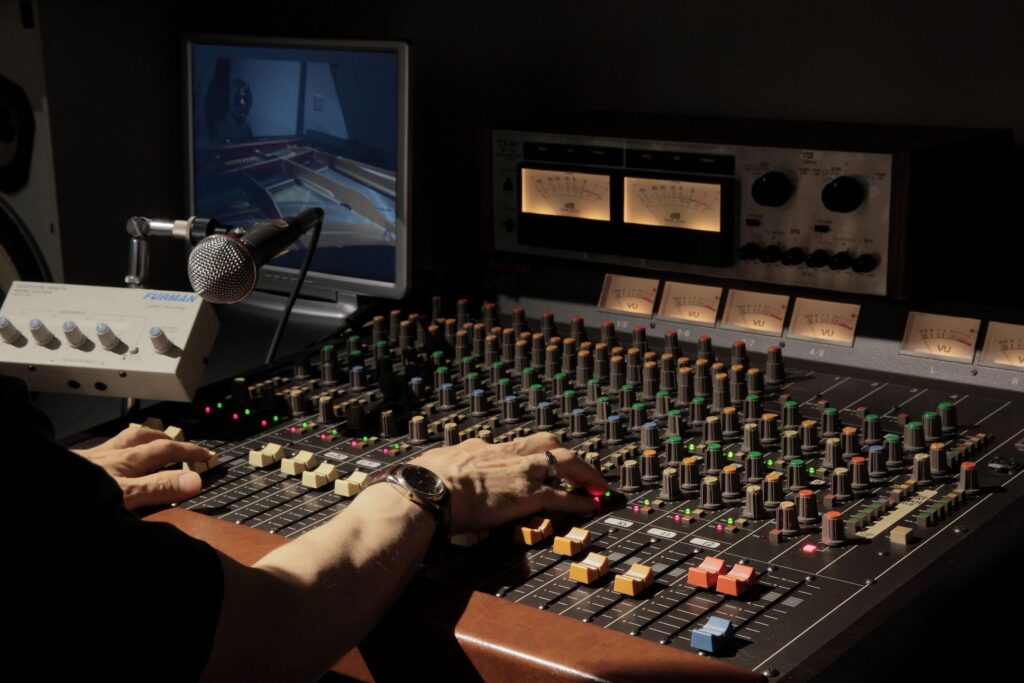
A mixer does just what it says – you plug everything you want to listen to (your piano, your iPad, maybe a microphone etc) into the mixer and then you can adjust the relative volume (and maybe other stuff) of each so that the overall “mix” sounds good. Then you can connect your headphones to the mixer and listen to everything together.
There are thousands of mixers out there and it can be easy to get overwhelmed, so I am going to show you a very basic example.
Simple Audio Mixer (Stereo!)
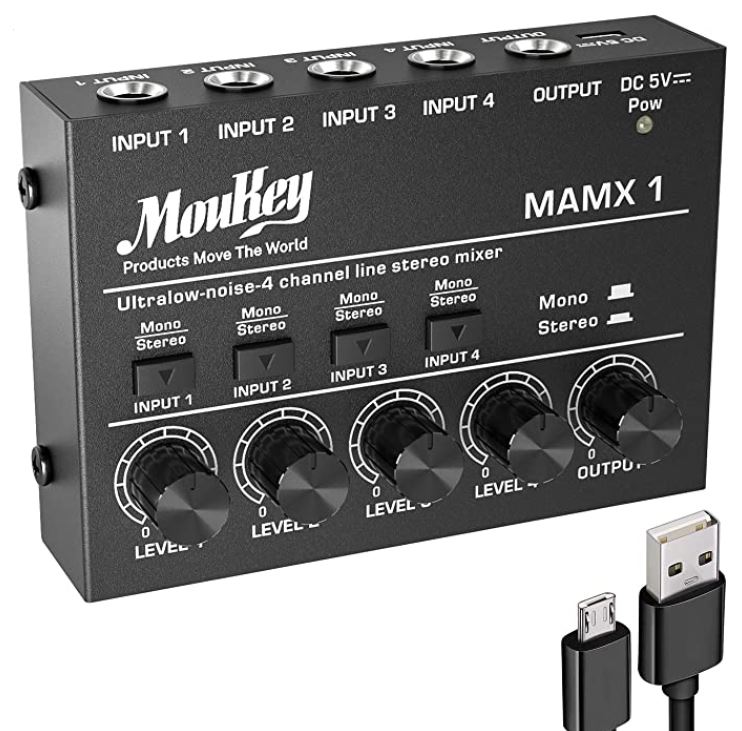
This is an example of a very basic mixer (please note I have not actually tested this mixer myself – but I would love to). There are alot out there that look like this one and sell for a bit less, but there’s a good chance those are mono inputs and outputs – each input on this one can be set to mono OR stereo! So you could connect your iPad to channel one set to stereo (using the cable I showed above along with a 1/4″ adapter), and then you could connect your 2 piano audio outputs to channels 2 and 3 (and set them to mono). You will even have one more input for a 1/4″ microphone if you like :). Then your headphones would connect to the 1/4″ stereo output port.
UPDATE!!!! I recently purchased a Moukey MAMX 3 (8 channel mixer) and have reviewed it here if you want to check it out!
In a practice setting (like in my living room) a mixer is REALLY handy so that I can have my piano and microphone plugged in as well as my iPad so I can play along with YouTube videos, or work on some of the awesome online piano courses I have taken – with a mixer, I can hear all of these sources at once with my headphones on.
Fancier Mixers
It’s beyond the scope of this post to dive too deep into fancier mixers; if you are curious about that then please check out my post on Introduction to Mixers & Audio Interfaces. In that post I will outline the 2 mixers that I use for recording videos and audio (Roland GO:Mixer Pro, & the Alesis MultiMix 4)
Option 2) Speakers With Multiple Inputs
This is another very easy option, and also has the added benefit of also providing you with a set of speakers! The kind of speakers you are after are powered (so they are not powered by a stereo, the amp is built in to them), and they need more than one input (so they can function as a mixer) and they need a headphone port. You also should try to use “studio monitor” speakers – these speakers don’t have fancy “bass boost” or other things that modify the sound (you want to hear the sound the way it actually IS).
I bought this set of Mackie CR3 Studio Monitors for myself and really like them (I’ll get to the review one day 😉 Note that Mackie has a series of these, the CR3’s are the smallest ones (I’m in a small apartment they are more than powerful enough).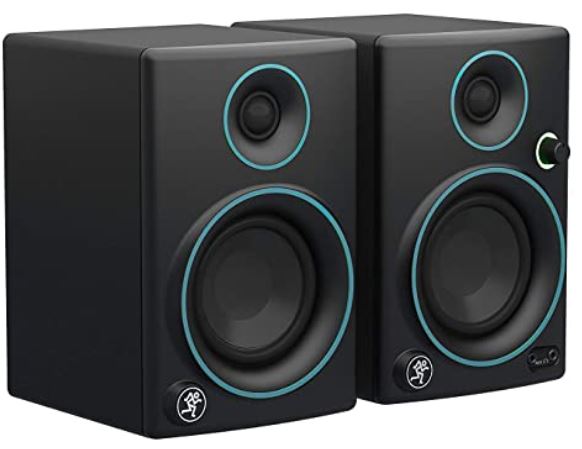
You can connect your 1/4″ piano output cables to the back of these speakers, and you can connect your device’s headphone port to the “Aux In” on the front of these speakers (NOTE: There is a version of these WITHOUT the “Aux In” – make sure you get the one that includes this port!). And then there is a 1/8″ headphone port on the front of the speakers you can use for your headphones (or you can unplug the headphones and use the speakers! And they sound wonderful.
Option 3) Headphones With Multiple Inputs
I have never tried these out myself, but would love to one day (they look very interesting!); you can now buy “mixing headphones” that have more than one input so they function like a mixer. 
Basically you have an input for your iPad or device, and another input for your piano (NOTE: There is only ONE input for your piano, so you would need to use a splitter cable to connect your piano to these instead of 2 separate mono cables).
Summary
Hear Your Piano & iPad Through Headphones
With all of the awesome technology available to help us learn piano nowadays, it’s important to be able to take advantage of as much of it as we can (and when someone else is in the room and we’re just learning . . . headphones can be a nice feature!)
As far as which solution to hear your piano & iPad through headphones might be best for you; if you are curious about recording yourself (audio and/or video) then you might want to consider one of the mixers I use (check out my Introduction to Mixers & Audio Interfaces post) before diving in with any of these simpler choices. Or if you just want to get up and running as quickly and easily as possible, and don’t foresee a need for getting anything fancier, then any of the other options here should work well for you. The small basic mixer is always something that is handy to have around (even if you do upgrade later), the speakers give you the added benefit of . . . well . . speakers! And the headphones with multiple inputs look like a super simple and portable solution (but not much other functionality is offered there).
I hope this post was helpful! Good luck and happy piano playing!
If you have any questions, please feel free to contact me!
